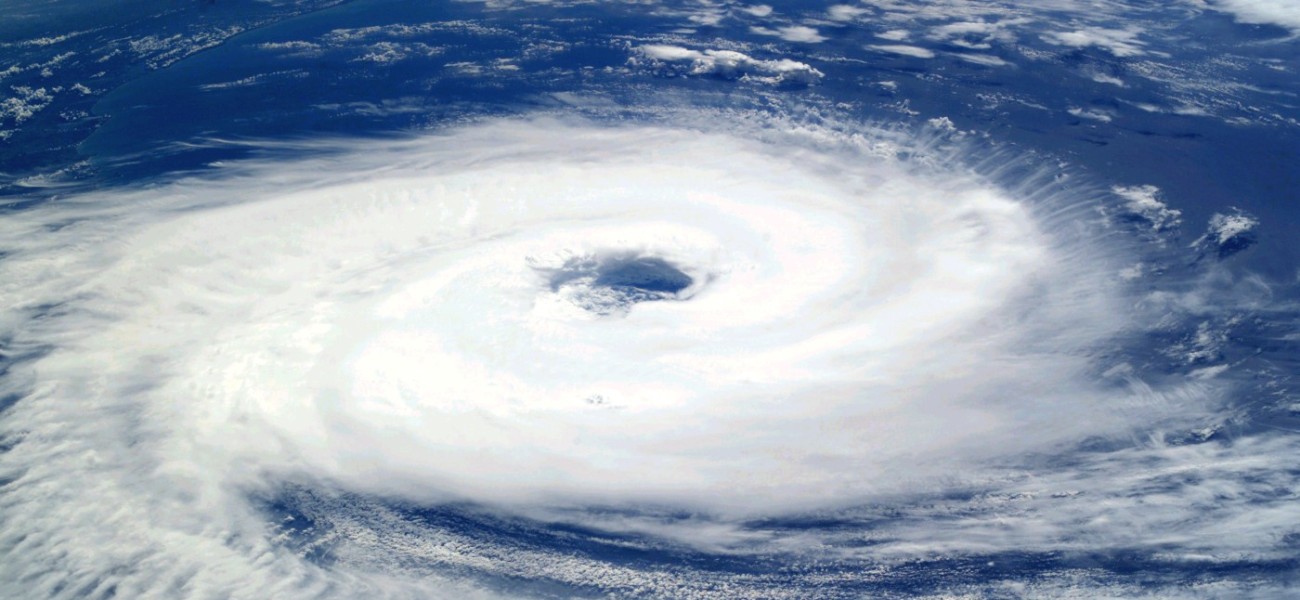
Tropical cyclones occurring near coastal areas are getting more intense, according to climate models. - Credit: NASA
Science breakthrough
Using computational resources at NERSC, researchers from Pacific Northwest National Laboratory, Lawrence Berkeley National Laboratory (Berkeley Lab), and partnering institutions have gained a better understanding of how tropical cyclones taking place near coastal regions have intensified over time, the likely causes of the change, and what the future might hold according to climate models. Their work was published in Earth’s Future in May.
Science background
Tropical cyclones that intensify near a coastline are among the most destructive natural hazards on Earth. Previous research helped scientists understand key contributors to these storms and their impacts, but few studies have looked at the phenomenon on a global scale. In this study, the researchers considered the large-scale environment to gain new insights that may help coastal communities prepare for a future with more frequent, more intense storms due to a warming climate.
Science breakdown
The team used the Perlmutter system at NERSC to analyze simulations using the Coupled Model Intercomparison Project phase 6 (CMIP6) climate model, looking at simulations of both current and future climates.
They found that the average intensification rate of tropical cyclones has increased significantly over the period 1979–2020 near global coastal regions. According to the simulations, the change is due primarily to increases in relative humidity and decreases in vertical wind shear – that is, changes in wind speed or direction over a short distance. High-resolution climate models suggest that the increase in intensification is likely to continue in the future as vertical wind shear continues to decrease. To better understand wind shear projections, the researchers performed a set of idealized numerical sensitivity experiments with a Stationary Wave Model, a model with simplified physics that allows researchers to tease out the various processes that play a role in the climate system. By capturing and isolating these processes, they found that enhanced warming in the upper troposphere and changing patterns of ocean warming are likely responsible for the intensification they observed.
Research lead
Karthik Balaguru, Pacific Northwest National Laboratory
Co-authors
C. Chang, L.R. Leung, G.R. Foltz, S.R. Hagos, M.F. Wehner, J.P. Kossin, M. Ting, W. Xu
Publication
Balaguru, K., Chang, C.-C., Leung, L. R., Foltz, G. R., Hagos, S. M., Wehner, M. F., et al. (2024). A global increase in nearshore tropical cyclone intensification. Earth's Future, 12, e2023EF004230. https://doi.org/10.1029/2023EF004230
Funding
DOE Office of Science, Office of Biological and Environmental Research
User facilities
NERSC
About NERSC and Berkeley Lab
The National Energy Research Scientific Computing Center (NERSC) is the mission computing facility for the U.S. Department of Energy Office of Science, the nation’s single largest supporter of basic research in the physical sciences.
Located at Lawrence Berkeley National Laboratory (Berkeley Lab), NERSC serves 11,000 scientists at national laboratories and universities researching a wide range of problems in climate, fusion energy, materials sciences, physics, chemistry, computational biology, and other disciplines. An average of 2,000 peer-reviewed science results a year rely on NERSC resources and expertise, which has also supported the work of seven Nobel Prize-winning scientists and teams.
NERSC is a U.S. Department of Energy Office of Science User Facility.
Media contact: Email our communications team ⟶